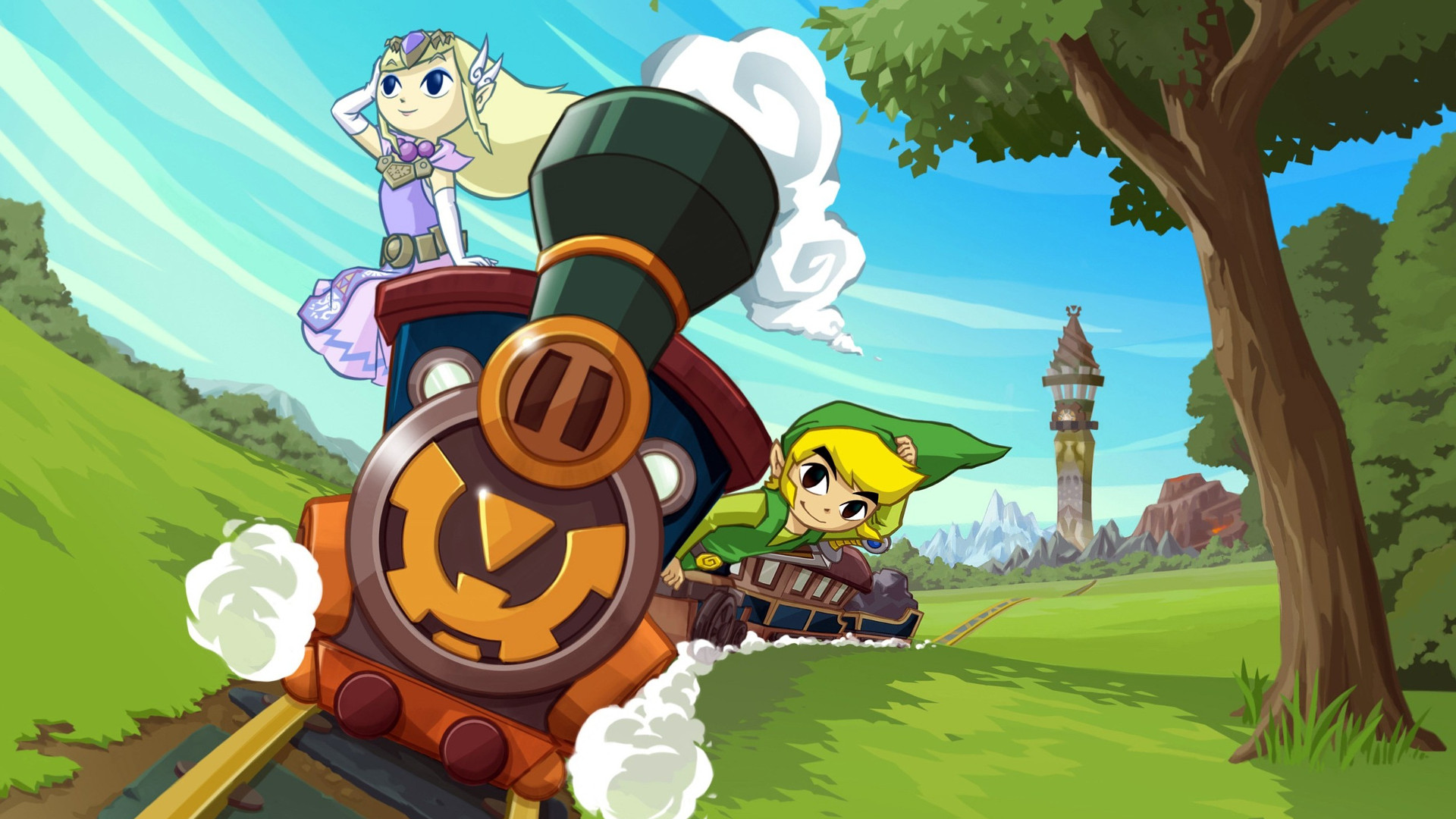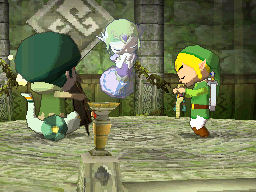Daily Debate: If You Could Re-map One Stylus-Based Input in Spirit Tracks to a Button, Which Would You Pick?
Posted on May 25 2024 by Jared Eubanks

I recently completed my first-ever playthrough of Spirit Tracks, originally released on the Nintendo DS. It was my first playthrough of either of the two stylus-based Zelda DS games (i.e., Spirit Tracks and Phantom Hourglass). I enjoyed the game with its whimsical charm, uplifting musical tracks, and unique storyline with Zelda as Link’s companion. However, similar to my playthrough of Skyward Sword, I found myself becoming frustrated with the controls, and I felt like a good game was being held back. Nintendo loves their hardware gimmicks, and when they find one, they typically go all in with it.
If you haven’t played Spirit Tracks before, everything can be controlled with a stylus. There is minimal use of the D-Pad and face buttons but only as a secondary means of accessing maps and menus. The shoulder buttons can be used for equipping your current weapon. Unfortunately, unless you read the manual or experiment with the buttons after receiving a new weapon, you find this out far too late.
After playing and discussing with others, I wondered if the controls could have been improved by mapping some of the stylus-based inputs to button inputs instead of the ones Nintendo selected. This would have required Nintendo to back off the “all in” approach and seek a more balanced or hybrid approach that mixed input methods. Could a primarily stylus-based but still hybrid approach have worked instead?
If I could discuss re-mapping some of the stylus-based input in Spirit Tracks with Nintendo, here are the four that I personally would consider and why:
- Use of D-Pad (or Face Buttons) for Movement: Movement and use of weapons cannot be performed simultaneously, and one obvious change to remove that prohibition would be the use of the D-pad for movement. I assume Nintendo considered this but opted not to implement it because this would be biased toward right-handed players with the stylus in their right hand and the D-pad in their left. One potential workaround would be to use the face buttons like a four-button D-pad on a left Nintendo Switch Joy-Con for left-handed players. Admittedly, this isn’t ideal for left-handed players, so maybe that’s why Nintendo went all in with the stylus for both movement and weapons.
- Use of D-Pad (or Face Buttons) as Weapon Hot Keys: A point of frustration for me was the method of switching between two weapons quickly, particularly in a boss battle. I would have enjoyed the ability to use the D-pad as hot keys for four different weapons/items to quickly switch between them rather than needing to tap the menu button icon. While activating the menu does pause the enemy’s attacks, I found myself losing losing the flow of the battle when switching between weapons particularly when certain bosses/puzzles have small time windows to work with. In order to not be biased toward right-handed players, this could be mirrored to the face buttons for left-handed players.
- Use of L and R Shoulder Buttons for Spirit Flute: Like many other Zelda games, Link learns a musical instrument and a handful of songs. The Spirit Flute is composed of various pipes of different lengths and colors that create different pitches. To make the experience more immersive, Nintendo requires the player to blow into the microphone of the DS while simultaneously using the stylus to slide the flute on the lower screen back and forth to match the notes of the song. I personally would have preferred the use of the L and R shoulder buttons to slide the Spirit Flute left and right between the various length/color pipes, as an alternative to the touch screen.
So if you’ve played through Spirit Tracks, how did you feel about having to use the stylus for nearly everything? Would you have preferred a hybrid approach with more button inputs? If so, what would you like to have seen re-mapped with buttons instead? Is it one of the those listed above, or something different altogether? Let us know in the comments below.

Jared Eubanks is a staff writer at Zelda Dungeon, and he is also a husband, father, and engineer. He is originally from the Atlanta, GA area and still lives there. He graduated from Georgia Tech and is a proud Yellow Jacket. He loves to play boardgames, build Lego, and read books with his family. He’s been gaming since childhood with the original NES and GameBoy, and he enjoys retro gaming, collecting, and modding consoles and handhelds. His favorite Zelda game is Breath of the Wild but is also fond of the older classic titles.







